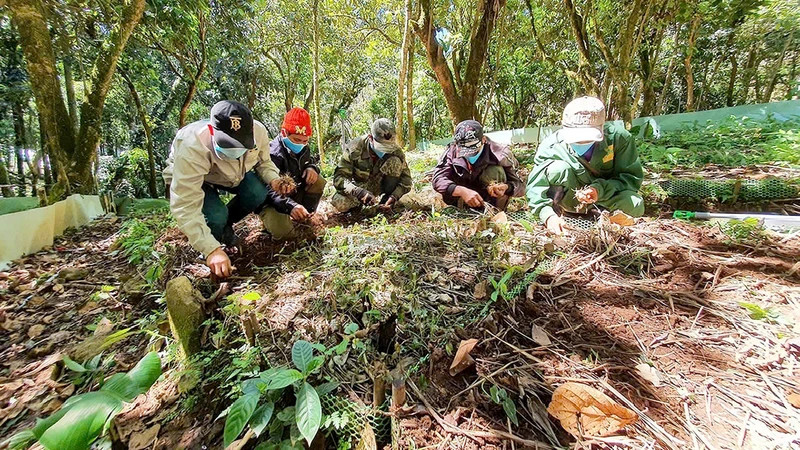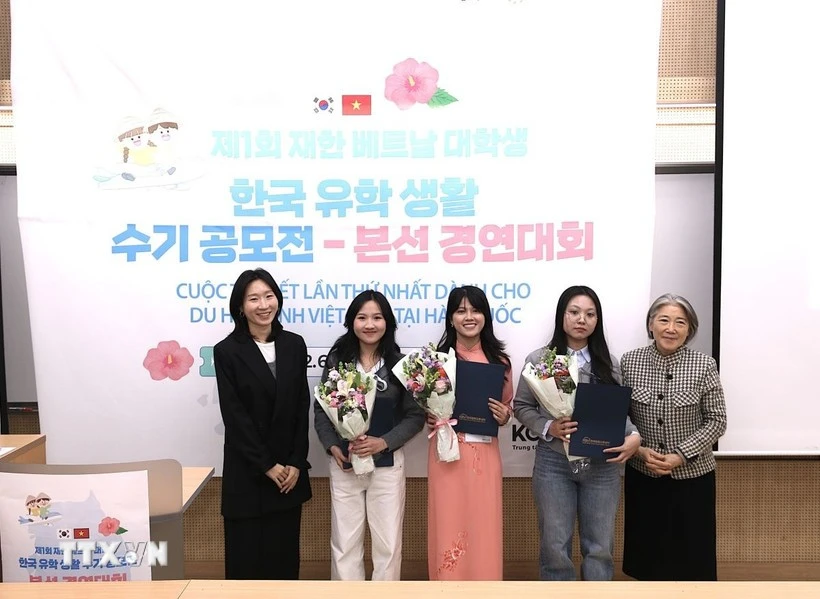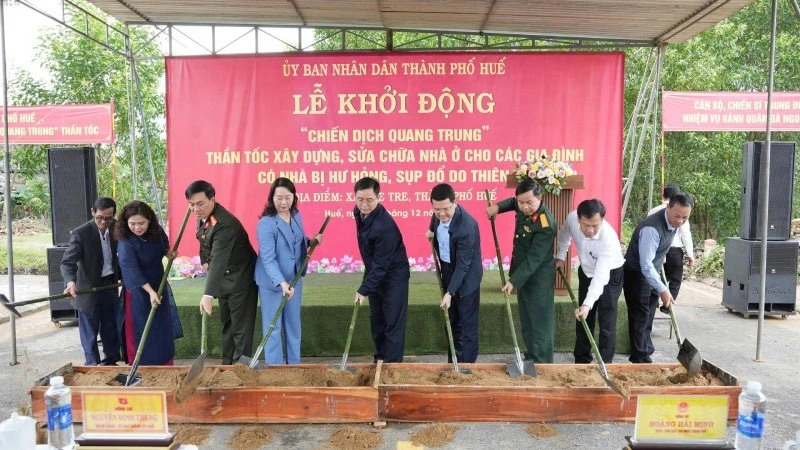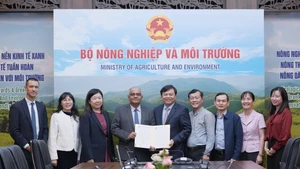Tu Mo Rong District, Kon Tum Province, is known to tourists as the "capital" of Ngoc Linh ginseng in Kon Tum Province. Ngoc Linh mountain range is covered with fog and cold rain all year round, where there is a large natural forest cover, which is an ideal condition for precious medicinal herbs to grow and develop.
Participating in growing ginseng in Ngoc Linh mountain range, A Linh at Pu Ta Village, Mang Ri Commune, Tu Mo Rong District, said that every year, after harvesting, people will bring ginseng seeds to the old forest to grow. By March, the plants sprout and produce tubers. About 5 months later, the ginseng plants begin to grow well and can be transplanted under the forest canopy.
However, this is the beginning of the rainy season, the ginseng plants are prone to rotting and dying, people have to wait until about October-November, when the weather is drier, to start the re-planting.
At that time, groups of households will go to the forest together and gently pull out the ginseng roots that have been sown in the nursery. They pull very gently to protect the roots and then plant them in the prepared area. After pulling them up, the plants must be planted immediately, if left for two or three days, the plants will weaken and die.
According to A Linh, when sowing seeds, the success rate is only about 60% to 70%. When planting, the survival rate decreases every year. From planting to harvesting, the survival rate is only 30% to 40% of the plants.
Therefore, although it is said to be cultivated ginseng the seedlings are sown from seeds, grown naturally in the forest. The planting process does not have any impact on drugs or fertilisers when the plant grows and develops.
A Duc at Long Hy Village, Mang Ri Commune, Tu Mo Rong District, said that many people still confuse Ngoc Linh ginseng with wild ginseng. Ngoc Linh ginseng only grows halfway up the mountains, where there is often fog.
Ngoc Linh ginseng has two round tubers at the bottom. The ginseng roots are like bamboo roots, yellow in colour, and the tubers are usually smaller and longer. The core inside is dark brown, indicating that the ginseng is old and has many active ingredients. Meanwhile, in wild ginseng, the root tubers are often like a mouse's tail, slightly black.
According to the research results of many scientists, Ngoc Linh ginseng is an endemic, rare plant species, distributed in central Vietnam, with good growth and development conditions under the natural forest canopy with a minimum coverage of 70% and an altitude of 1,200m to 2,500m. The roots and rhizomes of natural Ngoc Linh ginseng have 52 identified saponin compounds.Thanks to the discoveries of active ingredient content in Ngoc Linh ginseng, the value of this plant has increased, depending on the age of the plant, the price ranges from 150-200 million VND per kilogramme.
Chairman of Tu Mo Rong District People's Committee Vo Trung Manh said that Ngoc Linh ginseng is distributed in two provinces of Kon Tum and Quang Nam. Currently, Tu Mo Rong District has developed more than 2,800 hectares of Ngoc Linh ginseng.
Over the past five years, Ngoc Linh ginseng has helped nearly 2,000 households of the Xo Dang ethnic group escape poverty and helped hundreds of households get rich, with some households earning tens of billions of VND each year.
There have been cases of fake Ngoc Linh ginseng being sold with tubers that look similar to Ngoc Linh ginseng. The first to suffer are customers when they spend a large amount of money but do not buy the right product, while dedicated growers suffer losses.
Currently, each hectare of Ngoc Linh ginseng brings in a value of more than 30 billion VND, a crop with high economic value, however, this crop is facing the problem of fake ginseng, causing great losses to people, businesses, and cooperatives.
According to Professor, Dr Nguyen Minh Duc, Faculty of Pharmacy - Ton Duc Thang University, Ho Chi Minh City, due to the price difference of hundreds of millions of VND between some types of ginseng compared to Ngoc Linh ginseng, along with the situation of smuggling cheap wild ginseng with uncontrolled quality from China into Vietnam, the ginseng market is unstable and uncontrolled, leading to the proliferation of smuggled and counterfeit goods, affecting the image and reputation of Ngoc Linh ginseng and causing damage to consumers.
In addition, Vietnam's ginseng development strategy is not strict and scientific, causing difficulties for the development of Vietnamese ginseng in general and Ngoc Linh ginseng in particular.
According to Decision No. 611/QD-TTg dated June 1, 2023, of the Prime Minister on the programme of developing Vietnamese ginseng to 2030, with a vision to 2045, Ngoc Linh ginseng has been oriented to become a commodity that brings economic value to ginseng growers.
In recent times, the leaders of Kon Tum Province and especially the leaders of Tu Mo Rong District, have issued many policy documents to protect Ngoc Linh ginseng but have not yet achieved the desired results. Preserving and developing Ngoc Linh ginseng is an arduous journey.
However, not being afraid of difficulties or hardships, only planting trees that have been tested to be pure Ngoc Linh ginseng genes on site, not helping bad guys take advantage of the Ngoc Linh ginseng brand, and resolutely fighting against the situation of fake Ngoc Linh ginseng, are the things that the Xo Dang ethnic people at the foot of Ngoc Linh mountain have been doing to protect, preserve and develop Vietnam's "national treasure".
















